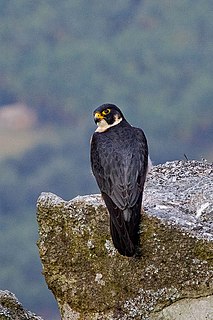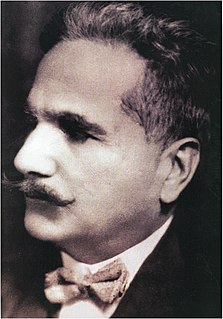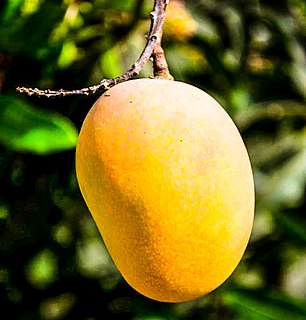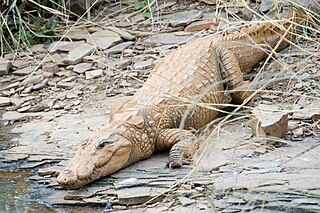 W
WCedrus deodara, the deodar cedar, Himalayan cedar, or deodar, is a species of cedar native to the western Himalayas. It grows at altitudes of 1,500–3,200 m (5,000–10,000 ft).
 W
WThe state emblem of Pakistan was adopted in 1954 and symbolizes Pakistan's ideological foundation, the basis of its economy, its cultural heritage and its guiding principles.
 W
WThe Faisal Mosque is a mosque located in Islamabad, Pakistan. It is the sixth-largest mosque in the world and the largest within South Asia, located on the foothills of Margalla Hills in Pakistan's capital city of Islamabad. The mosque features a contemporary design consisting of eight sides of concrete shell and is inspired by the design of a typical Bedouin tent.
 W
WThe shaheen falcon is a non-migratory subspecies of the peregrine falcon found mainly in the Indian subcontinent. It has also been described as a migratory subspecies. Other common names for the subspecies include the black shaheen and Indian peregrine falcon. The word shaheen in these names may also be spelled as shahin. This species was termed as the black shaheen by falconers to separate it from the true shaheen of Persian literature. Scholars of Persian and the Russian ornithologist Georgi Petrovich Dementiev have noted that the name shaheen in Persian literature actually referred to Falco peregrinus babylonicus.
 W
WThe flag of Pakistan traces its current form back to a meeting of the Constituent Assembly of Pakistan on 11 August 1947, three days before the Partition of British India, when it was adopted by the All-India Muslim League as the official flag-to-be of the Dominion of Pakistan. It was retained upon the establishment of a constitution in 1956, and remains in use as the national flag for the present-day Islamic Republic of Pakistan. The flag is made up of a green field with a stylized tilted white crescent moon and five-pointed star at its centre, and a vertical white stripe at its hoist-end. Though the specific shade of green on the flag is mandated only as 'dark green', its official and most consistent representation is in Pakistan green, which is shaded distinctively darker.
 W
WThe Indus river dolphin, also known as the bhulan in Urdu and Sindhi, is a species of toothed whale in the family Platanistidae. It is endemic to the Indus River basin of Pakistan, with a small remnant population in the Beas river in India. This dolphin was the first discovered side-swimming cetacean. It is patchily distributed in five small, sub-populations that are separated by irrigation barrages.
 W
WAllama Muhammad Iqbal, was a South Asian Muslim writer, philosopher, and politician, whose poetry in the Urdu language is among the greatest of the twentieth century, and whose vision of a cultural and political ideal for the Muslims of British-ruled India was to animate the impulse for Pakistan. He is commonly referred to by the honorific Allama.
 W
WJasminum officinale, known as the common jasmine or simply jasmine, is a species of flowering plant in the olive family Oleaceae. It is native to the Caucasus, northern Iran, Afghanistan, Pakistan, the Himalayas, Tajikistan, India, Nepal and western China. The species is also widely cultivated in many places, and is reportedly naturalized in Spain, France, Italy, Portugal, Romania, Croatia, Bosnia and Herzegovina, Montenegro, Serbia, Algeria, Florida and the West Indies.
 W
WFatima Jinnah, widely known as Māder-e Millat, was a Pakistani politician, dental surgeon and one of the leading founders of Pakistan. She was the younger sister of Muhammad Ali Jinnah, the first Governor General of Pakistan.
 W
WMuhammad Ali Jinnah was a barrister, politician and the founder of Pakistan. Jinnah served as the leader of the All-India Muslim League from 1913 until the inception of Pakistan on 14 August 1947, and then as the Dominion of Pakistan's first governor-general until his death. He is revered in Pakistan as the Quaid-i-Azam and Baba-i-Qaum. His birthday is observed as a national holiday in Pakistan.
 W
WK2, at 8,611 metres (28,251 ft) above sea level, is the second-highest mountain on Earth, after Mount Everest. It lies in the Karakoram range, in part in the Gilgit-Baltistan region of Pakistan-administered Kashmir and in part in a China-administered territory of the Kashmir region included in the Taxkorgan Tajik Autonomous County of Xinjiang.
 W
WThe snow leopard, also known as the ounce, is a felid in the genus Panthera native to the mountain ranges of Central and South Asia. It is listed as Vulnerable on the IUCN Red List because the global population is estimated to number fewer than 10,000 mature individuals and is expected to decline about 10% by 2040. It is threatened by poaching and habitat destruction following infrastructural developments. It inhabits alpine and subalpine zones at elevations from 3,000 to 4,500 m, ranging from eastern Afghanistan, the Himalayas and the Tibetan Plateau, to southern Siberia, Mongolia and western China. In the northern part of its range, it also lives at lower elevations.
 W
WMangifera indica, commonly known as mango, is a species of flowering plant in the sumac and poison ivy family Anacardiaceae. Mangoes are believed to have originated from the region between northwestern Myanmar, Bangladesh, and India. It is a large fruit-tree, capable of growing to a height and crown width of about 30 metres (100 ft) and trunk circumference of more than 3.7 metres (12 ft).
 W
WA mango is an edible stone fruit produced by the tropical tree Mangifera indica which is believed to have originated from the region between northwestern Myanmar, Bangladesh, and northeastern India. M. indica has been cultivated in South and Southeast Asia since ancient times resulting in two distinct types of modern mango cultivars: the "Indian type" and the "Southeast Asian type". Other species in the genus Mangifera also produce edible fruits that are also called "mangoes", the majority of which are found in the Malesian ecoregion.
 W
WThe markhor is a large Capra species native to Central Asia, Karakoram and the Himalayas. It is listed on the IUCN Red List as Near Threatened since 2015.
 W
WMazar-e-Quaid, also known as Jinnah Mausoleum or the National Mausoleum, is the final resting place of Quaid-e-Azam Muhammad Ali Jinnah, the founder of Pakistan. Designed in a 1960s modernist style, it was completed in 1971, and is an iconic symbol of Karachi as well as one of the most popular tourist sites in the city. The mausoleum complex also contains the tomb of Jinnah's sister, Māder-e Millat Fatima Jinnah, as well as those of Liaquat Ali Khan and Nurul Amin, the first and eighth Prime Ministers of Pakistan respectively. The tomb of Sardar Abdur Rab Nishtar, a stalwart of the Muslim League from Peshawar, is also located there.
 W
WMinar-e-Pakistan is a national monument located in Lahore, Pakistan. The tower was built between 1960 and 1968 on the site where the All-India Muslim League passed the Lahore Resolution on 23 March 1940 - the first official call for a separate and independent homeland for the Muslims of British India, as espoused by the two-nation theory. The resolution eventually helped lead to the emergence of an independent Pakistani state in 1947. The tower is located in the middle of a garden, called Iqbal Park.
 W
WThe mugger crocodile is a medium-sized broad-snouted crocodile, also known as mugger and marsh crocodile. It is native to freshwater habitats from southern Iran to the Indian subcontinent, where it inhabits marshes, lakes, rivers and artificial ponds. It rarely reaches a body length of 5 m and is a powerful swimmer, but also walks on land in search of suitable waterbodies during the hot season. Both young and adult mugger crocodiles dig burrows to which they retreat when the ambient temperature drops below 5 °C (41 °F) or exceeds 38 °C (100 °F). Females dig holes in the sand as nesting sites and lay up to 46 eggs during the dry season. The sex of hatchlings depends on temperature during incubation. Both parents protect the young for up to one year. They feed on insects, and adults prey on fish, reptiles, birds and mammals.
 W
WThe Pakistan Monument is a national monument and heritage museum located on the western Shakarparian Hills in Islamabad, Pakistan. The monument was constructed to symbolize the unity of the Pakistani people. It is dedicated to the people of Pakistan who sacrificed their "today" for a better "tomorrow". Its elevation makes the monument visible from across the Islamabad-Rawalpindi metropolitan area and is a popular tourist destination.
 W
WThe "Qaumī Tarānāh", also known as "Pāk Sarzamīn", is the national anthem of the Islamic Republic of Pakistan. It was written by Hafeez Jalandhari in 1952 and the music was produced by Ahmad G. Chagla in 1949, preceding the lyrics. Although in Classical Urdu, the anthem has heavy Persian influence and only uses the word ‘ka’ in Urdu the lingua franca of Pakistan—rendering the lyrics mutually intelligible in both Urdu and Persian languages.
 W
WThe star and crescent is an iconographic symbol used in various historical contexts, including as a prominent symbol of the Ottoman Empire, with numerous modern countries still using it as a national symbol. It was developed in the Greek colony of Byzantium ca. 300 BCE, though it became more widely used as the royal emblem of Pontic king Mithradates VI Eupator after he incorporated Byzantium into his kingdom for a short period. During the 5th century, it was present in coins minted by the Persian Sassanian Empire; the symbol was represented in the coins minted across the empire throughout the Middle East for more than 400 years from the 3rd century until the fall of the Sassanians after the Muslim conquest of Persia in the 7th century. The conquering Muslim rulers kept the symbol in their coinage during the early years of the caliphate, as the coins were exact replicas of the Sassanian coins.
 W
WFaith, Unity, Discipline is the national motto of Pakistan. It is regarded as the guiding principle of Pakistan's nationhood.
 W
WTor putitora, the Putitor mahseer, Himalayan mahseer, or golden mahseer, is an endangered species of cyprinid fish that is found in rapid streams, riverine pools, and lakes in the Himalayan region. Its native range is within the basins of the Indus, Ganges and Brahmaputra rivers. It is a popular gamefish, once believed to be the largest species of mahseer, and can reach up to 2.75 m (9.0 ft) in length and 54 kg (119 lb) in weight, though most caught today are far smaller. It is threatened by habitat loss, habitat degradation and overfishing, and it already has declined by more than an estimated 50%. This omnivorous species is generally found near the surface in water that ranges from 13 to 30 °C (55–86 °F).
 W
W W
W W
W W
W